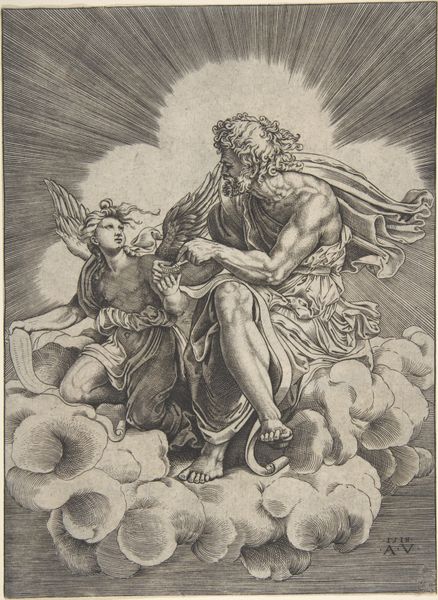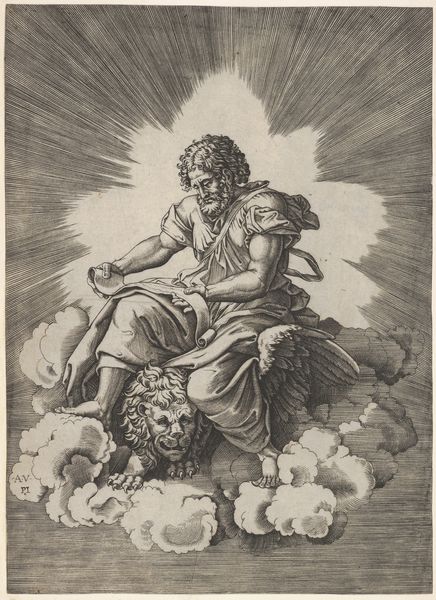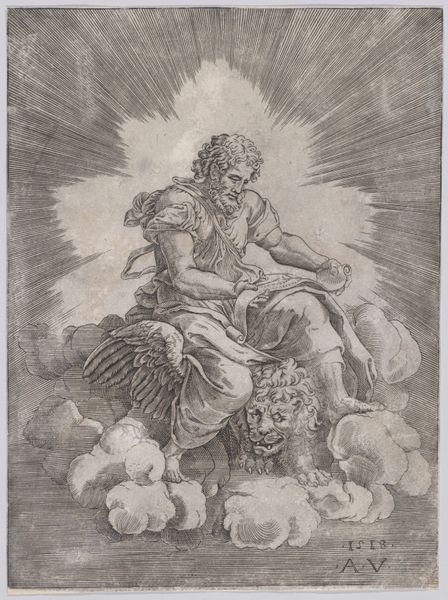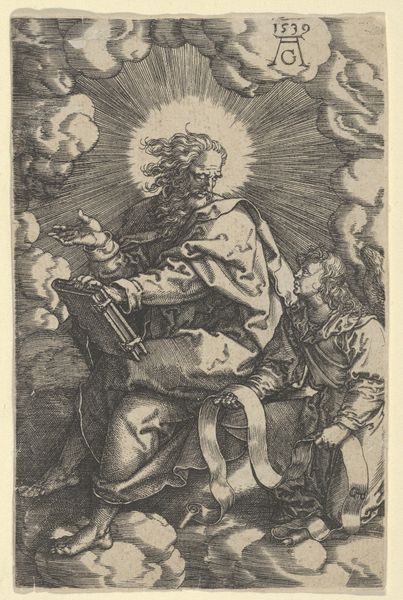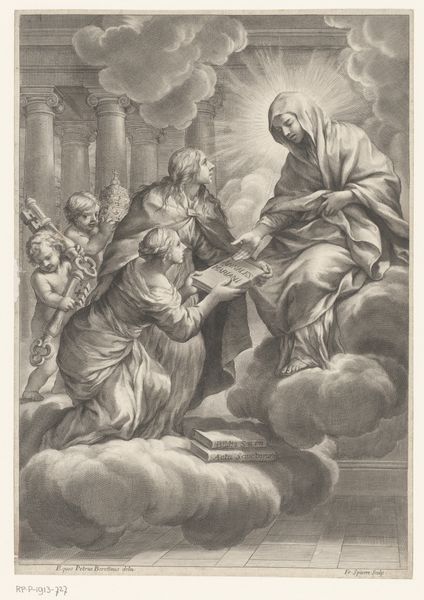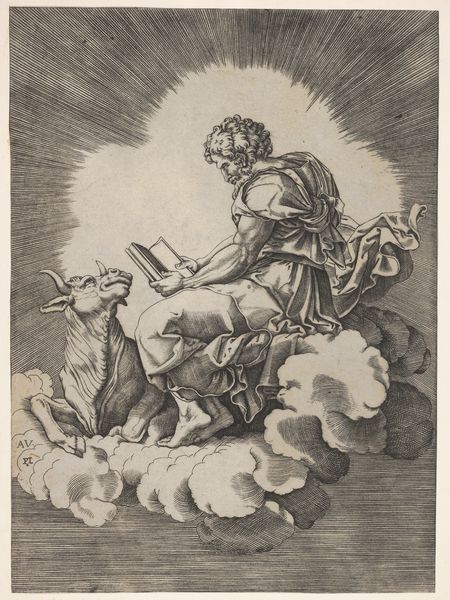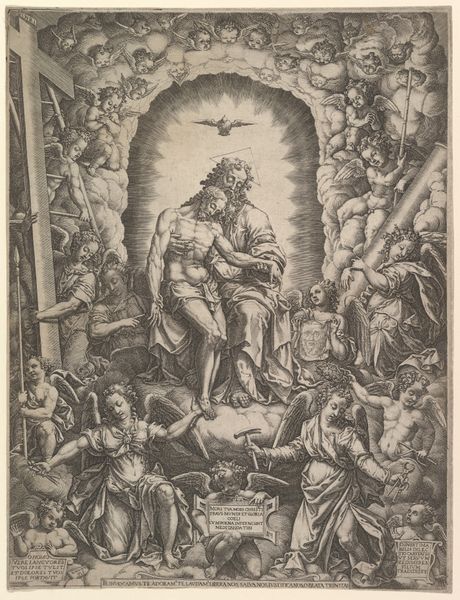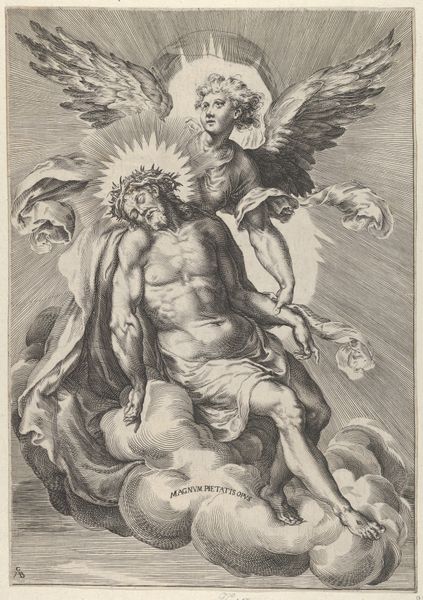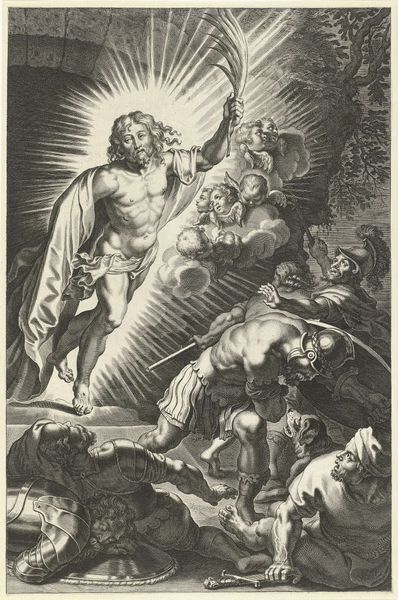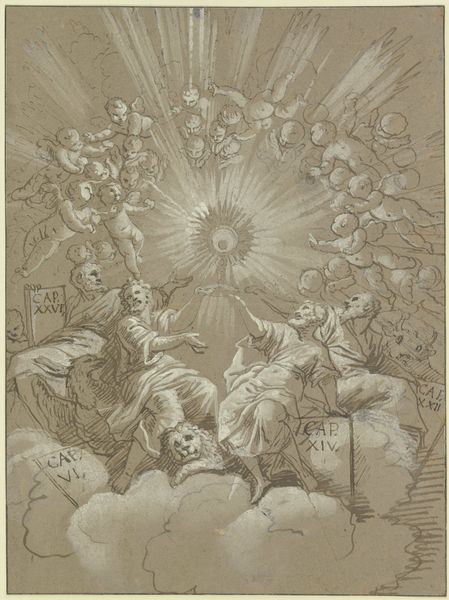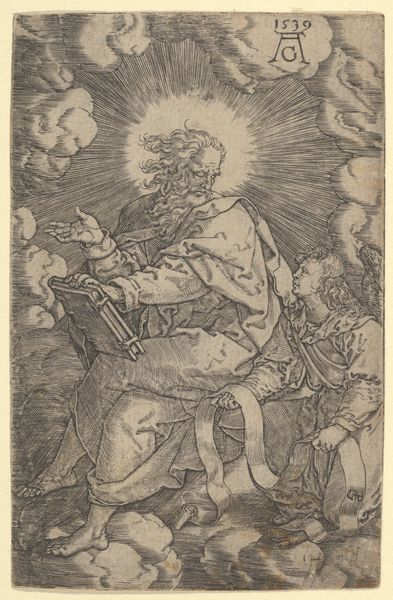
St. Matthew, seated on a cloud with legs crossed and dipping a quill into an inkwell held by an angel, who also holds an inscribed scroll, from a series of the four evangelists after Agostino Veneziano, which are in turn after Giulio Romano 1518
0:00
0:00
drawing, print, engraving
#
drawing
#
pen drawing
# print
#
figuration
#
11_renaissance
#
cloud
#
italian-renaissance
#
engraving
#
angel
Dimensions: sheet: 9 7/16 x 6 15/16 in. (23.9 x 17.7 cm)
Copyright: Public Domain
Editor: So, this is "St. Matthew," an engraving from 1518, after Agostino Veneziano, who was, in turn, inspired by Giulio Romano. It’s interesting how this image is already a copy of a copy! It has this otherworldly quality – St. Matthew looks like a Greek god. What significance do you think this layering of visual references adds? Curator: Indeed! The layering is crucial. Notice how St. Matthew’s portrayal blends classical figuration with Christian iconography. He embodies divine authority through physical presence – reminiscent of Zeus – yet his act of writing, guided by the angel, anchors him to Christian scripture. What enduring ideas about the transmission of divine knowledge do you think this visual blending aimed to convey? Editor: I see what you mean. It's almost saying that divine inspiration comes in many forms. The figure seems to inhabit both pagan and Christian worlds simultaneously. What about the angel and scroll? They feel very specific. Curator: Precisely. The angel functions as both divine messenger and practical assistant, emphasizing that inspiration is not a solitary act. And observe how the scroll, inscribed with text, grounds the ethereal scene. It suggests tangible, lasting consequences arise from the saint's divinely-inspired writing. This coupling reveals cultural memory at play – linking classical aesthetics with evolving Christian interpretations. Do you find echoes of this synthesis elsewhere in Renaissance art? Editor: Definitely. It’s almost like they were trying to legitimize the present by connecting it to a grand, idealized past. Curator: An astute observation! This print reveals how artists consciously shaped cultural identity, bridging past and present through enduring visual symbols. This reframing shaped both religious devotion and perceptions of artistic authority, and I’ll certainly remember that.
Comments
No comments
Be the first to comment and join the conversation on the ultimate creative platform.
